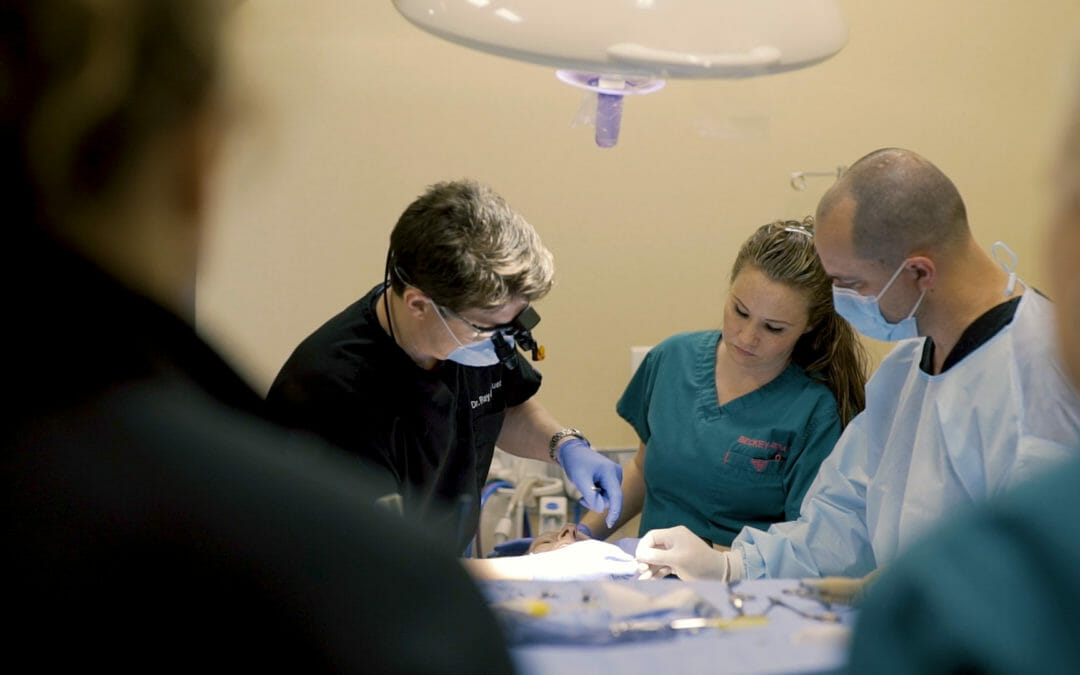When a child is born with a cleft lip and/or a cleft palate, it generally results from these features not developing properly during pregnancy. A cleft lip is one or more splits or openings in the upper lip. A cleft palate is splits or openings in the roof of the mouth. Many times, a patient has both at the same time. These are not common, but they are one of the most commonly found birth defects in babies. They generally are found by themselves, but they can also be found along with a number of syndromes and conditions.
Many parents get upset when they see that their baby has been born with a cleft lip and/or a cleft palate. However, these are highly treatable birth defects. It often takes a few surgeries for them to be corrected. There will be very little scarring after these surgeries, and the child will have normal function from the lip and palate as well as an appearance that is more normal.
Symptoms of Cleft Lip and Palate
When a child has a cleft palate, it generally isn’t obvious when looking at the patient’s face. This split in the roof of the mouth does not alter the look of the face, though it does alter the use of the palate. When a patient has a cleft lip, it may be on one side of the face or on both. This split lip may be just a notch in the upper lip, or it may extend all the way from the lip up through the gums and into the palate and end at the base of the nose.
The child may experience difficulty when eating or have a hard time learning to talk. Babies have a hard time sucking milk. The child may also experience frequent ear infections and may have a loss of hearing. They may also have dental problems because the cleft can affect the development of teeth. Kids who have to undergo these surgeries often have a hard time understanding why it needs to be done and may have a lot of negative emotions about their cleft and surgeries. This can also result in behavioral problems rooted in stress.
It’s rarer, but there can be a cleft that only shows up in the soft palate muscles. These are located in the very back of the mouth and have the mouth’s lining covering them. This may not be noticed right at birth and may be discovered later when there are symptoms of it. These symptoms can include the child having a hard time swallowing and difficulty eating. They may speak in a very nasal tone and may have foods or liquids come from their nose. They may also experience frequent ear infections.
Surgery for Cleft Lips and Palates
The facial reconstruction surgery that is needed for a cleft lip and/or palate is an individual one that takes into account your child’s unique cleft. The first surgery is often a cleft repair that will greatly help the condition, though that may change as the child gets older. There may be several surgeries scheduled to improve the way the nose and lip look as well as to make speech easier.
The first surgery for a cleft lip is generally done in a child from three to six months old. A cleft palate repair is done when the child is around 12 months old. There are often subsequent surgeries that are needed between the age of two and the upper teens. The number of these surgeries varies with the specific problem that child has and how well it responds to surgery.
These surgeries will be done in the hospital while your child is under general anesthesia, allowing them to sleep through the surgery. There are many techniques used in these surgeries to repair this birth defect and to help the patient avoid the complications that can happen from a cleft lip and palate.
Repairing the Cleft
The surgery for a cleft lip is done to close the splits that exist in the lip. It is often done by making incisions on each side of the patient’s cleft and then stitching those flaps together. This will include stitching up the muscles in the lip. This can repair the cleft and make the lip look more normal as well as to function better. If there is any nasal repair needed, that is done along with the cleft lip repair.
A cleft lip surgery uses various methods to close the split and to rebuild both the soft and hard palate of the roof of the mouth. Incisions are made on each side of the split, and the surgeon changes the way the muscles and tissues are positioned. Sometimes, cleft palate repair also includes installing ear tunes to help the child have a smaller risk of a buildup of ear fluid. This can cause a loss of hearing. This is done by placing tiny tubes into the eardrum to allow the fluid to leave the ear.
Over time, there may be more surgeries indicated simply to help with scar tissue and to make the outside of the mouth look more normal.
If you have a child with a cleft lip or palate, contact us at DFW Oral Surgeons to schedule your consultation. The repair of these clefts can make it easier for your child to eat, talk and even breathe. It can boost the patient’s quality of life and help to improve their appearance.

